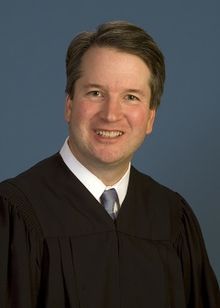Respect to the employment law bloggers, reporters, and others who have been trying to read the tea leaves to predict what Judge Brett Kavanaugh’s record as a jurist would foreshadow should he ascend to the U.S. Supreme Court.
Discrimination claims cases
In employment discrimination claims, Judge Kavanaugh’s opinions over the years typically favored the employer.
Over at Littler, Michael Lotito summarizes many of the labor and employment decisions from Judge Kavanaugh. But, he also underscores how Judge Kavanaugh likes to cut to the chase. For example, there’s his disdain for the burden-shifting analysis employed in disparate treatment cases:
“In a 2008 opinion, he noted that ‘[j]udicial inquiry into the prima facie case is usually misplaced.’ He characterized that inquiry as ‘a largely unnecessary sideshow’ and announced a simplified approach for disparate-treatment claims. He explained that ‘where an employee has suffered an adverse employment action and an employer has asserted a legitimate, non-discriminatory reason for the decision, the district need not–and should not–decide whether the plaintiff actually made out a prima facie case under McDonnell Douglas.’ Instead, trial courts should focus on the more important question of whether the employee can establish that the employer’s rationale is pretext ‘and that the employer intentionally discriminated against the employee.’”
That case is Brady v. Office of Sergeant at Arms.
A friend of big business? Or just common sense?
Among the “6 Kavanaugh Employment Cases Lawyers Need To See” (subscription required), Law360’s Vin Gurrieri highlights Southern New England Telephone Co. v. NLRB in which Judge Kavanaugh wrote concluded that the employer did not violate federal labor law by forbidding employees who interacted with customers from wearing union shirts that said “Inmate” on the front and “Prisoner of AT&T” on the back. Judge Kavanaugh emphasized that “[c]ommon sense sometimes matters in resolving legal disputes.”
But, there’s some employee-friendly stuff too. Like a single-incident hostile work environment.
That didn’t come out right. Let’s start over.
Rarely is there a situation in which a single act is severe enough to create a hostile work environment.
My buddies Phil Miles and Jon Hyman blogged about Judge Kavanaugh’s 2013 concurrence in a race-discrimination case called Ayissi-Etoh v. Fannie Mae in which Judge Kavanaugh “underscored” that a single use of the n-word may create a hostile work environment.
Lateral transfer = retaliation? Could be.
Jackson Lewis published a comprehensive review of Judge Kavanaugh’s time on the DC Circuit. Among the highlighted cases is Ortiz-Diaz v. United States HUD in which Judge Kavanaugh asked the DC Circuit to rule that “all discriminatory transfers (and discriminatory denials of requested transfers) are actionable under Title VII.” Judge Kavanaugh further opined that “transferring an employee because of the employee’s race (or denying an employee’s requested transfer because of the employee’s race) plainly constitutes discrimination…”
Judge Kavanaugh can hit a lay-up.
At the Employment & Labor Insider, another one my employment-law blogging pals, Robin Shea, notes that Judge Kavanaugh affirmed a lower court ruling granting summary judgment for an employer on an employee’s claims of retaliation. Robin notes that the employee “served undercooked chicken to a banquet of 250 people. In addition to undercooking food and engaging in unsanitary practices, he also allegedly falsified his time records. He was finally terminated after he cooked and allowed to be served some breaded chicken that had plastic wrap under the breading. (The plastic wrap melted and apparently stuck to the chicken.)”
Ewww.
Administrative agencies like the DOL and EEOC may become less influential.
Reporting for Law360, Jimmy Hoover writes (subscription required) that “[c]onfirmation of … Brett Kavanaugh, would spell further trouble for federal agencies and so-called Chevron deference“; i.e., the respect the courts often give to an administrative agency’s interpretation of ambiguous laws. Mr. Hoover notes that “Judge Kavanaugh has expressed misgivings with the way his colleagues on the D.C. Circuit have applied the doctrine’s two-step process, where judges are first asked to determine whether the statutory language is ‘ambiguous,’ and then whether the agency’s interpretation is a reasonable one.”
What do you think?
From a pure labor and employment law perspective, are you feeling Brett Kavanaugh on the Supreme Court? Email me with your hot take. I’d love to hear from you.
